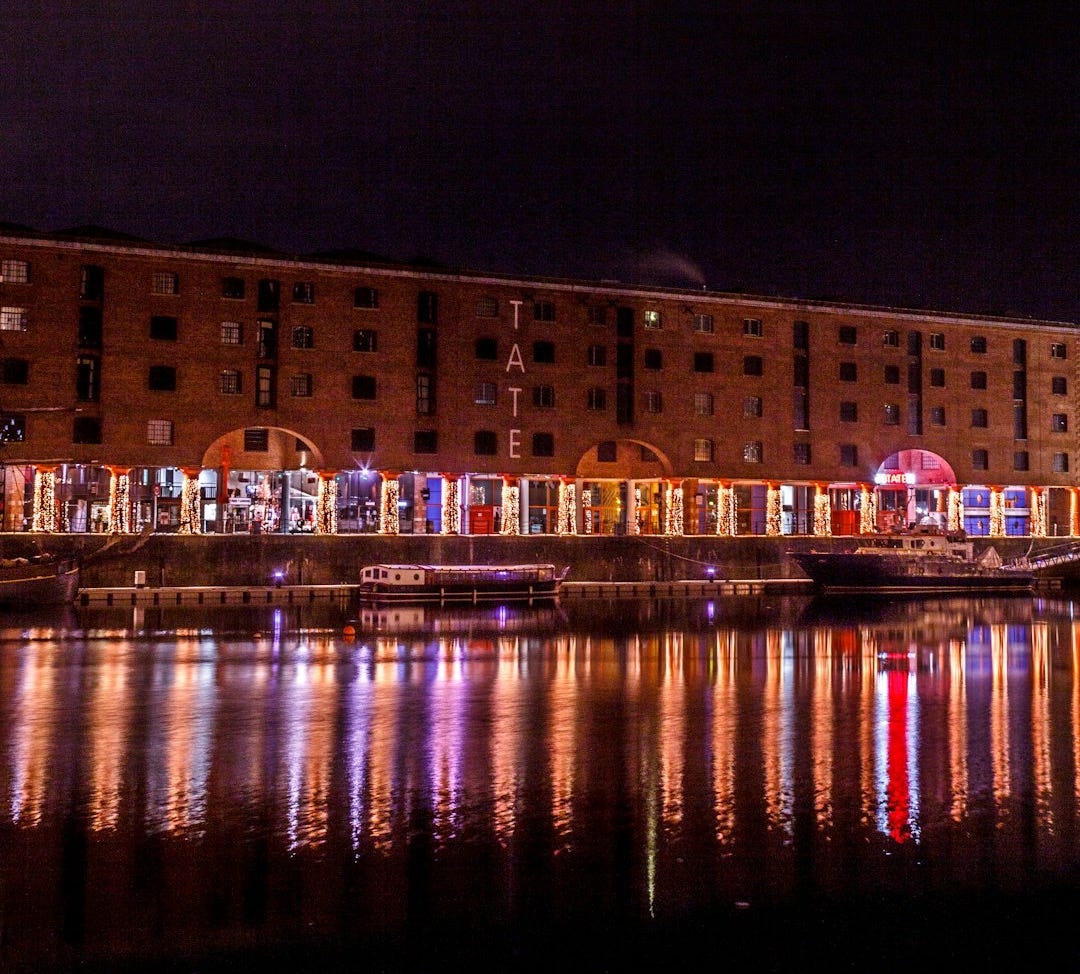21/30: home as a body, as a building, as a city
Shared experiences of mothering after the death of a parent, and time travel via Google street view
Liverpool is the pool of life. It makes to live. (Carl Jung)

Liverpool is about an hour’s drive from where I grew up on the North Wales coast. We’d travel east on the A55 expressway and every time I would wait for the moment when you could look out of the passenger side window and spot Liverpool in the distance, the dark shapes of the Anglican and Catholic cathedrals poking into the sky on the horizon. Then we’d turn the car north towards Birkenhead, where we’d pay a toll to use the Mersey Tunnel, crossing under the river and emerging into Liverpool near the docks. Dad would inevitably start to sing ‘Ferry Cross the Mersey’ by Gerry and the Pacemakers.
In my childhood memories, Liverpool is a city of annual Christmas shopping trips: hurrying along crowded rain-slicked streets at twilight in search of presents you couldn’t find in North Wales shops1. I loved the city at Christmas, with its twinkling light installations far grander than those of our home town.
We also visited Liverpool for day trips in the school holidays, going to the Walker Art Gallery or the Albert Dock. I remember excellent cakes in the cafe at the Walker, and an enormous room full of towering white marble statues that used to scare me when I was very small. The Albert Docks were red painted pillars and a warren of small shops, museums and galleries, and the floating ITV weather map of the UK in the dark waters of the dock itself.
Liverpool is sometimes known as the capital of North Wales. It’s the big city that’s closest to North Wales. In the nineteenth century increasing numbers of Welsh people migrated to Liverpool in search of work; by the 1870s there were around 50,000 Welsh born people living in the city. Three National Eisteddfodau have been held in Liverpool, and one ‘over the water’ in Birkenhead on the Wirral. The National Eisteddfod is an annual 8 day festival and celebration of Welsh language culture, with competitions in poetry, art and music.
Liverpool is also my mum’s hometown, the place she was born and lived in until adulthood. The place my grandparents and great-grandparents and a good chunk of my great-great grandparents were born and lived. My nana lived in Liverpool until I was 7 or 8 years old, in the house my mum had grown up in. We visited her several times a year but I have few clear memories of the house.
I remember sitting on loungers with foam seat cushions in a sun room or conservatory, delighted with the novelty of a chair that I could put my feet up on. I remember the smell of tomatoes in the greenhouse, even though my grandfather - the gardener of the house - had been dead for 10 years by then. I remember a bedroom with white walls halfway up the stairs. On the bed was what looked like white rabbit soft toy with red eyes that had a zip on its tummy, and inside was hidden a lacy satin nightdress and dressing gown, lemon and peach colours, cool to the touch.
I recently made a journey to that house on Google street view. It was unrecognisable from how it would have looked in the late 1980s, had probably been through several rounds of DIY home improvement since Nana lived there. I also tracked down some interior photographs of the house on Rightmove from when it had last been sold in the early 2010s. Gratifyingly, the photographs verified my vague childhood memories, showing me the sun room at the back of the house and a bedroom right where I’d remembered it, doorway opening directly off the stairs.
My grandfather died two years before I was born. To me as a child, he had always been absent: grass was green, the sky was blue, my grandfather was dead. But to Mum and Nana it was a recent death, he had been here and alive just a few years ago and now he was gone. Next summer it will be 10 years since Mum died and the sharpness of her absence still catches me most days like a fresh wound. My youngest son was born 9 months after her death and I was grieving hard through his baby and toddlerhood. Mum must have been feeling something very similar during my early childhood.
It’s something that I wish I could talk to her about: the experience of carrying a child and giving birth in the aftermath of a parent’s death. The experience of seeing your parent’s dead body, followed by the experience of giving birth to your child. At the time, I found the experience itself too intense to be able to reflect on how it felt, on the ways in which it differed from first pregnancy. 2015, 2016, 2017: pregnancy, childbirth, caring for an infant. It’s all a little fuzzy in my memories now. There are moments that stand out clear and distinct, a lot of them, but I’ve lost the thread of the narrative, lost the sense of each day linking on to the next like beads on a necklace.
Now, nine years after Mum’s death, I want to re-examine my experiences but I’m not sure how to piece together the narrative so that it holds firm. I feel like it will collapse in on itself without support, or have to be propped up with (re)constructed plausible moments based on my fallible memory and journal scraps.
918 words
This was the 1980s and 1990s, before the ease and expanded world of internet shopping.



